Using a Plough Plane
When using a plough plane, the cutting iron can be set deeper than a smoothing plane as it is narrower and therefore requires much less effort to push into the wood.
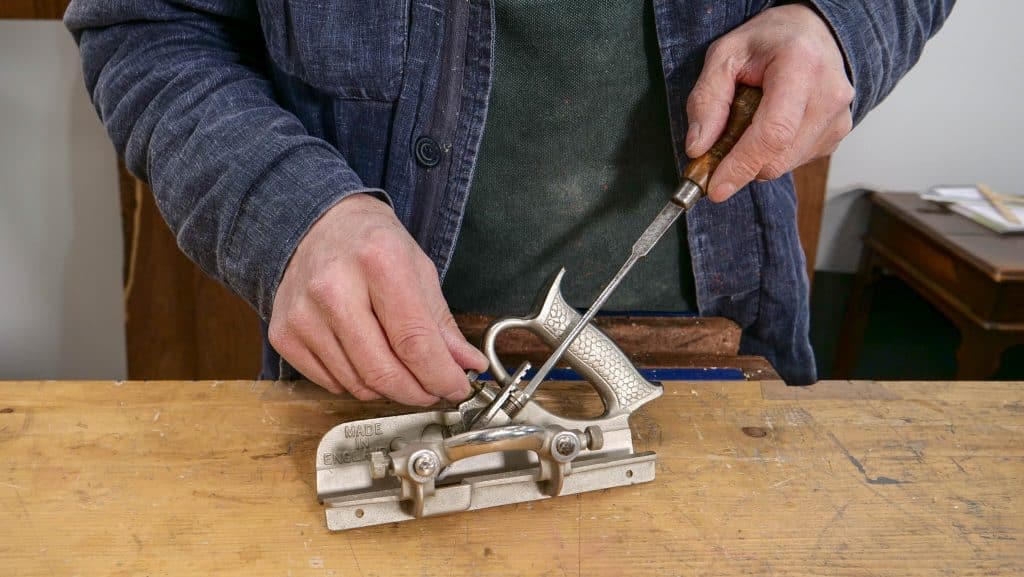
The cutting iron sometimes go under the wood’s surface fibres and causes them to tear because the side walls at the surface level are not severed.
To better establish the side walls and avoid tearout, use a marking gauge to pre cut the wood fibres then use a knife to deepen these gauge lines.
The iron must be finely set to begin with to allow the groove to be created and the walls to be strengthened as subsequent cuts deepen the groove. Once a shallow depth has been established, then a deeper set can be used.
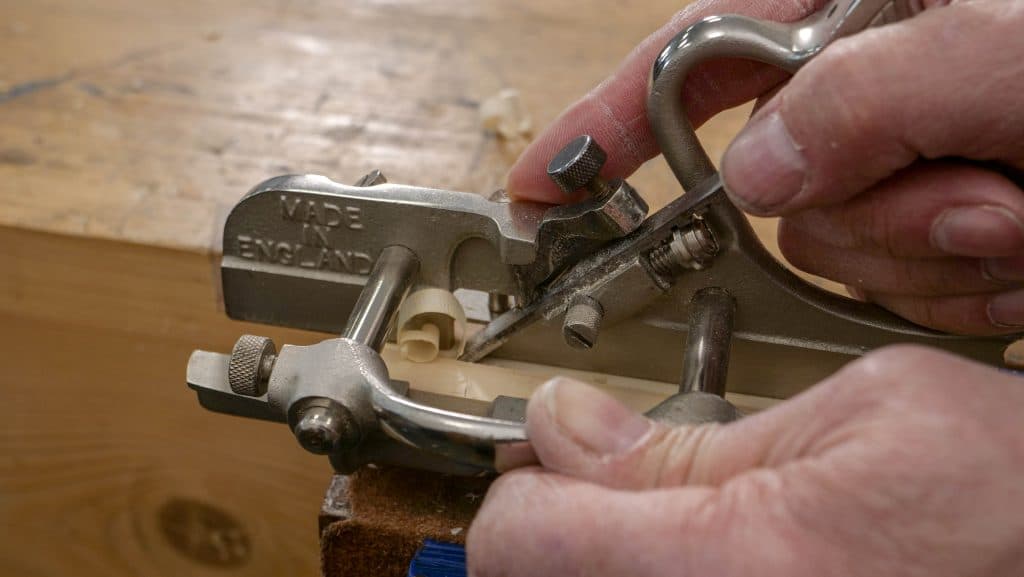
To use, grip the back handle with your right hand and the side handle with your left hand. Do not press heavily down as you push the plough plane as the cutter and weight of your arms and hands will pull the cutter down into the wood. Start with short, small strokes and apply lateral (sideways) pressure towards the side of the wood, making the strokes longer each time. Start at the end of the stock, taking short shavings and then moving gradually backwards taking longer shavings. Continue this until you are at your final depth at the end of the cut and work your way back along the ploughed groove until the full depth is achieved and the stop prevents further cutting.

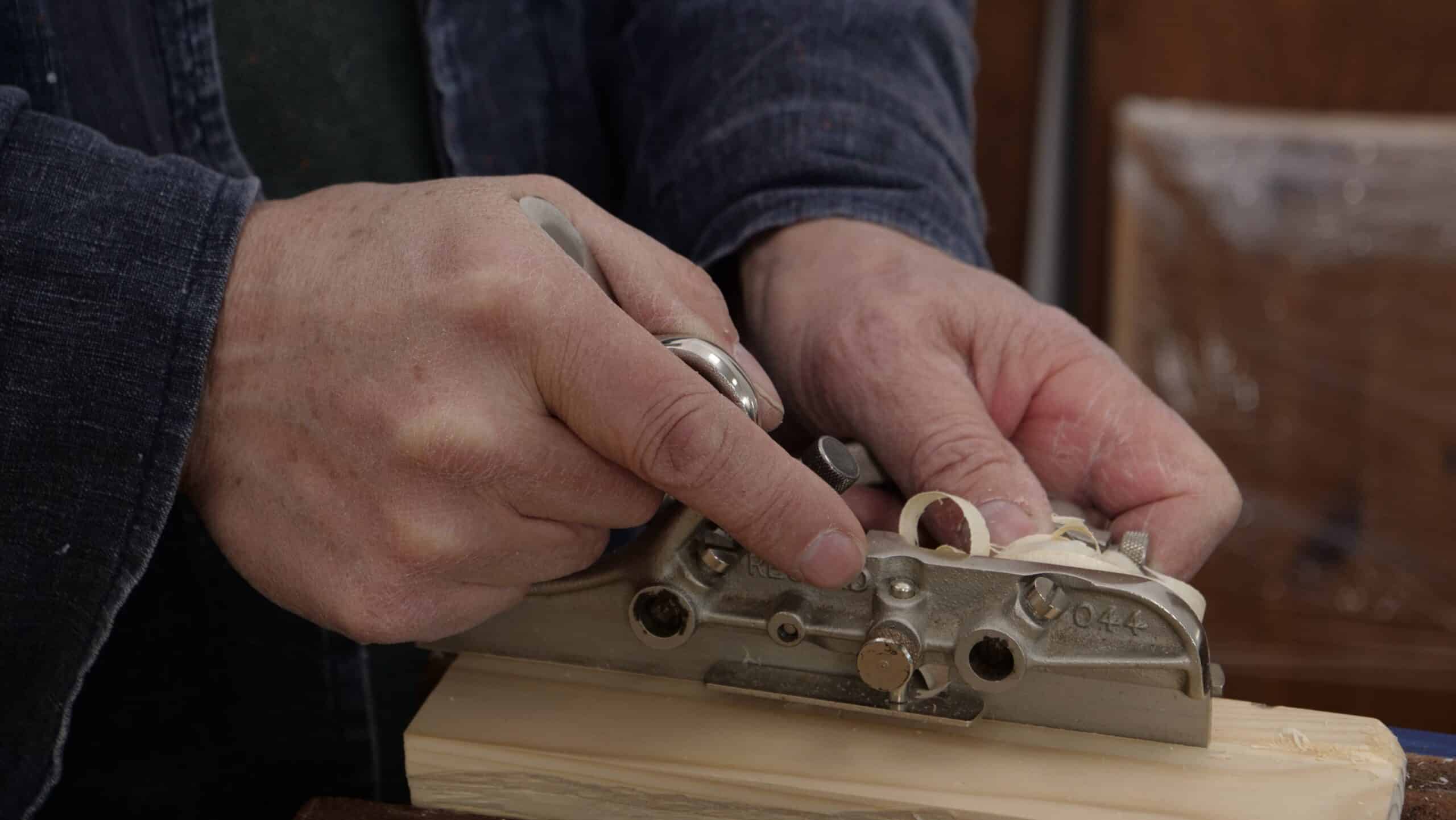
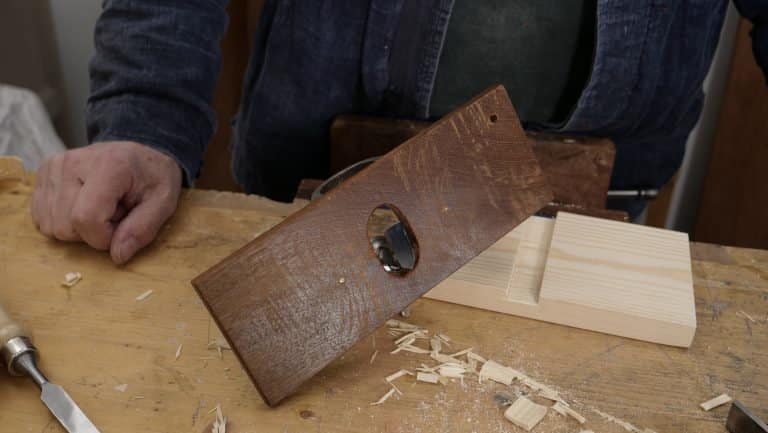
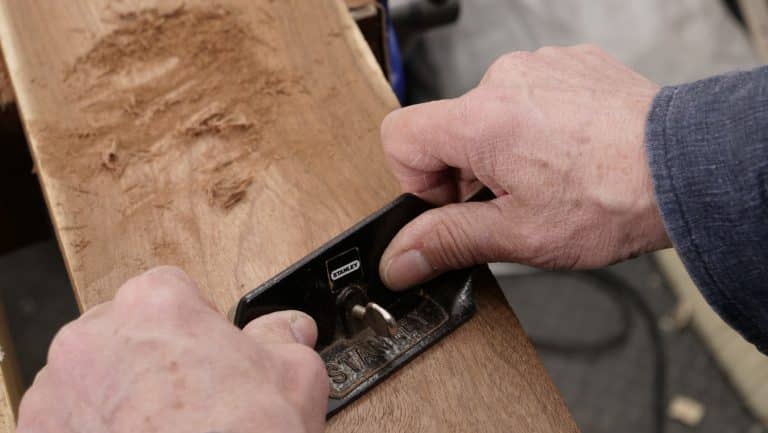
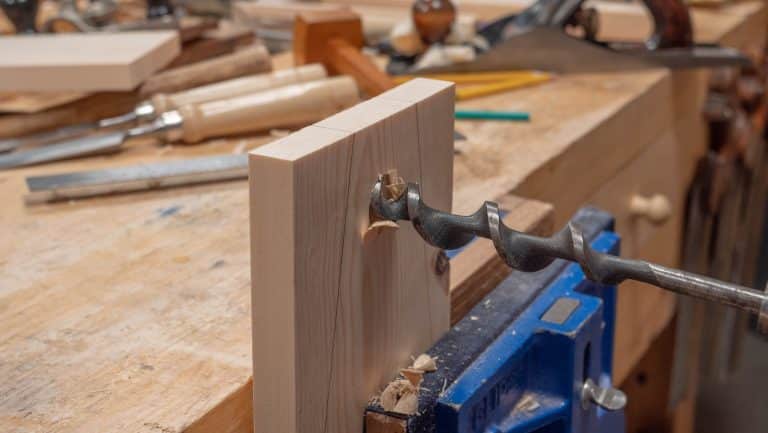
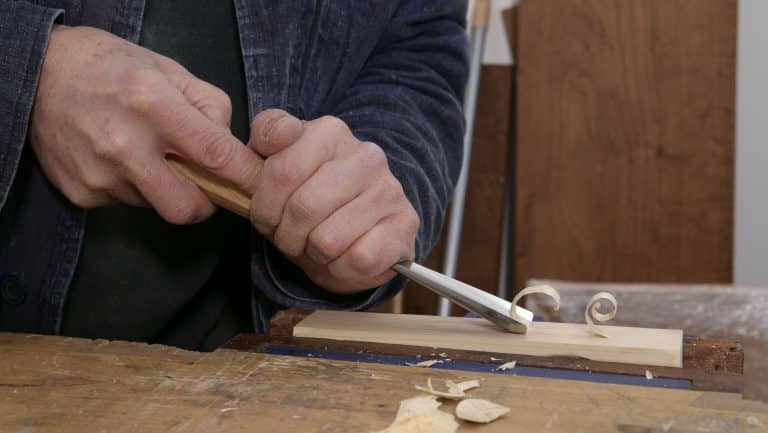

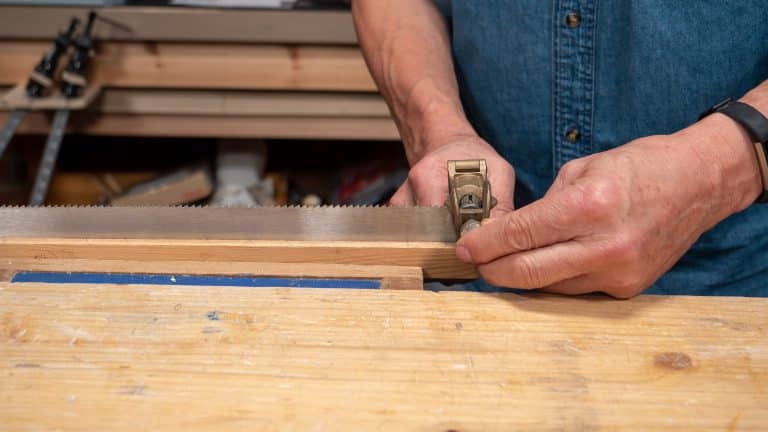
Hi Paul and team,
I have the opportunity to buy a Stanley 45 at 80 $ US, what do you thing ? instead of buying a plough plane ?
Thank you
Hi,
Paul says:
You could buy a plough plane for much less than that, you’re not likely to use the other blades for anything as they don’t work that well.
Kind Regards,
Izzy
Thanks a lot for your answer.
Best regards
Hi Paul! I’d like to know something about the record 044 plough plane. With this only tool would I be able to tonguing and grooving? Thank you Paul and Have a nice day!
I need a little advise using a plough plane. I recently purchased a Stanley 13-052 (used but like new) and shortly after was given a Stanley 45 (after restoration in very good working order). The blades are sharp. Keeping the planes absoluetly verticle takes some practice and I am getting better at it. The #45 is easier to keep verticle due to the double skate. I have gotten to the point I can quickly plough a clean crisp grove in softwood. However when I attempt to plough a grove in old (very hard) red oak it is another story. Again the #45 works better than the #13-052, but either plane wants to dive into the grain. If I back the blade out to the point it does not get stuck, it doesn’t cut.
Obviously I am doing something wrong! In softwood my bad technique is tolerable, but in hardwood that is not the case. Any idea what I am doing wrong?
I asked Paul and he suggested checking out the parallelity between the fence and the sole to make sure the two are parallel when they are locked off with the locking nuts. He said: “I often find they are not parallel and best to leave the rear one loose.”